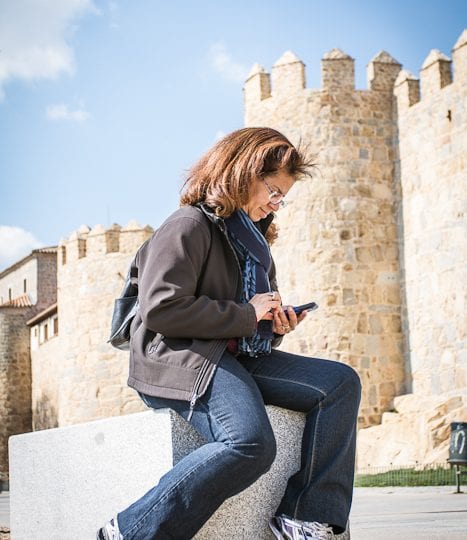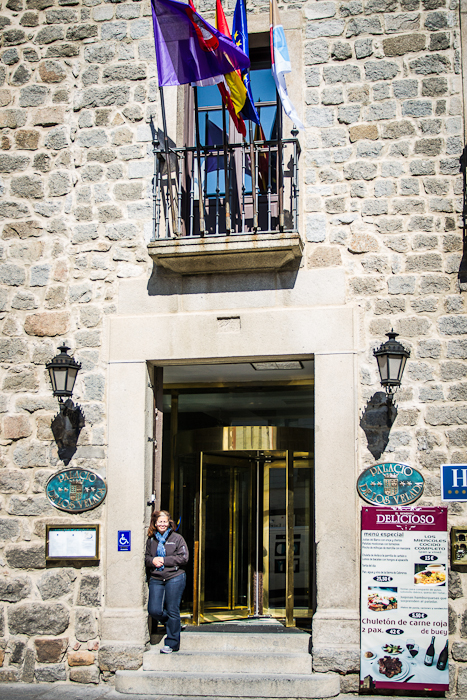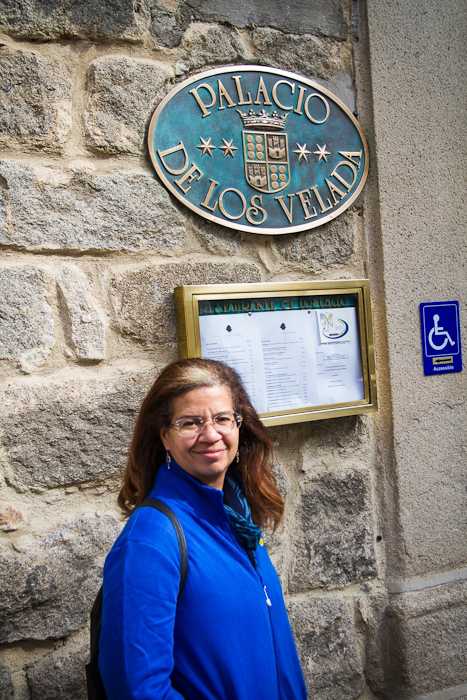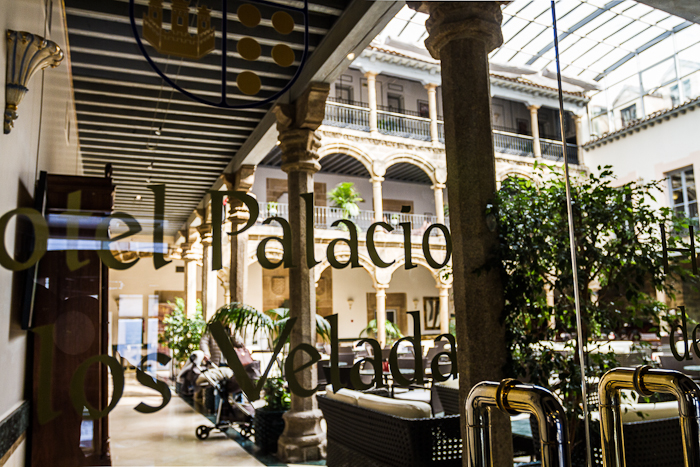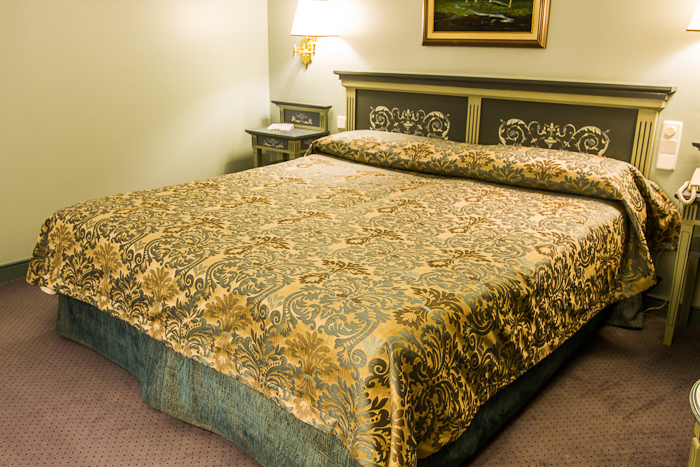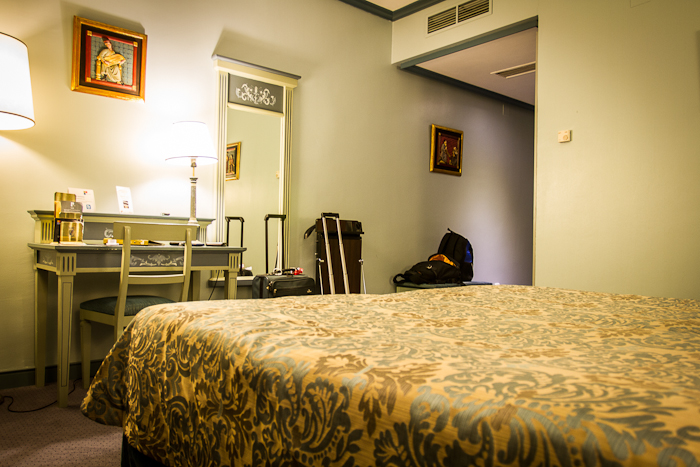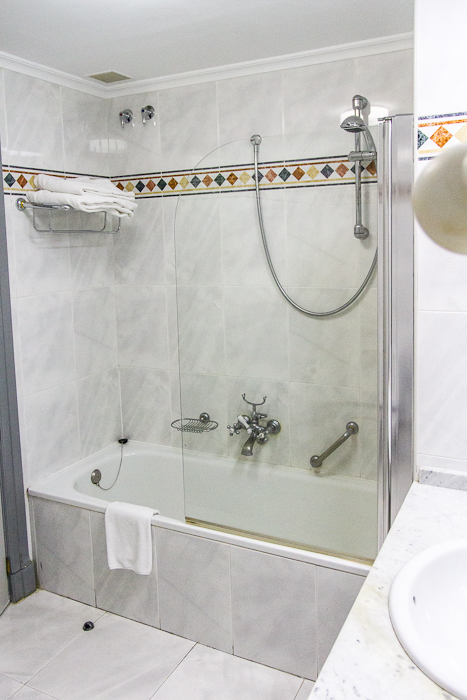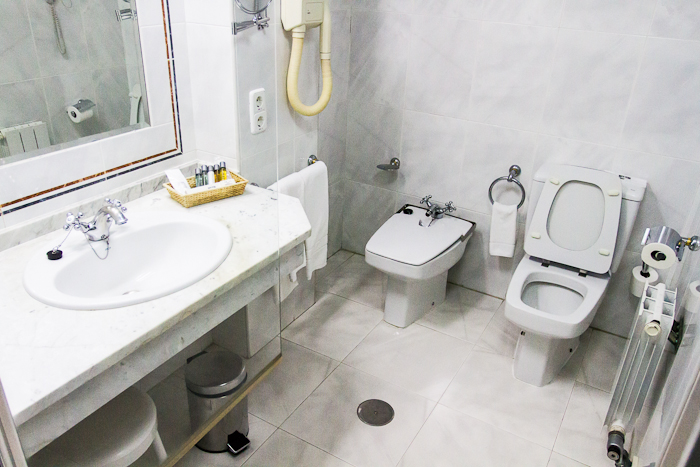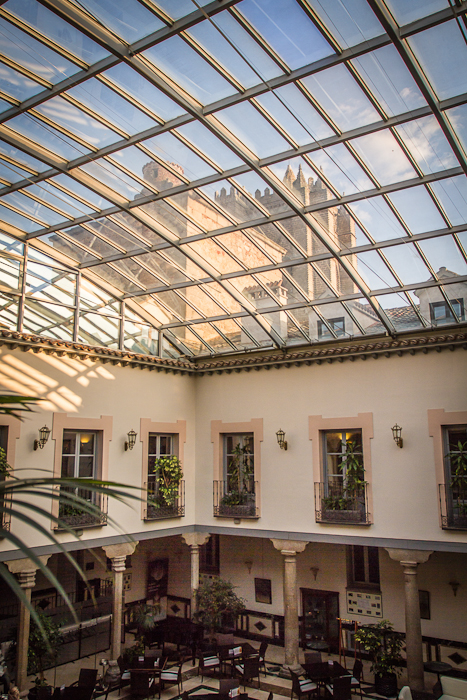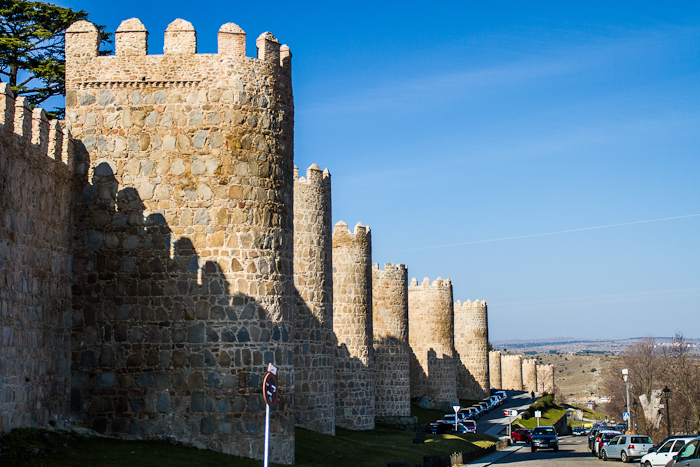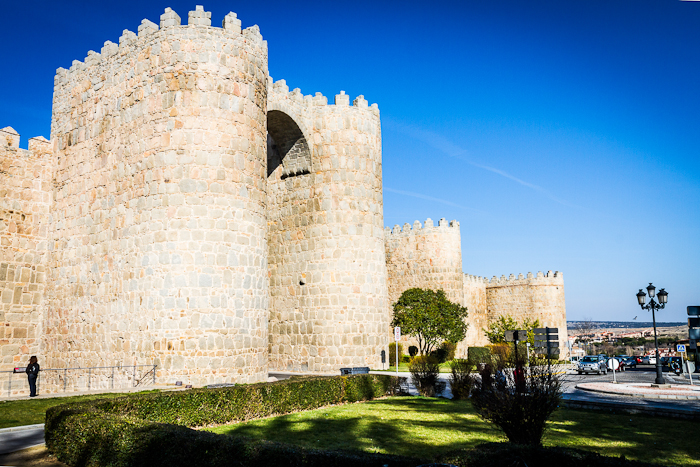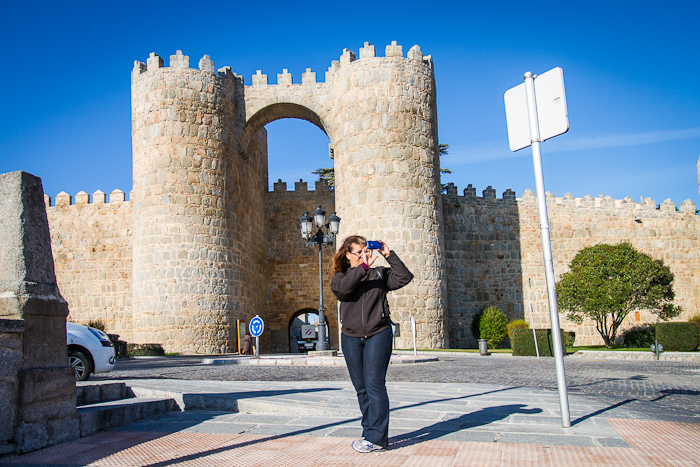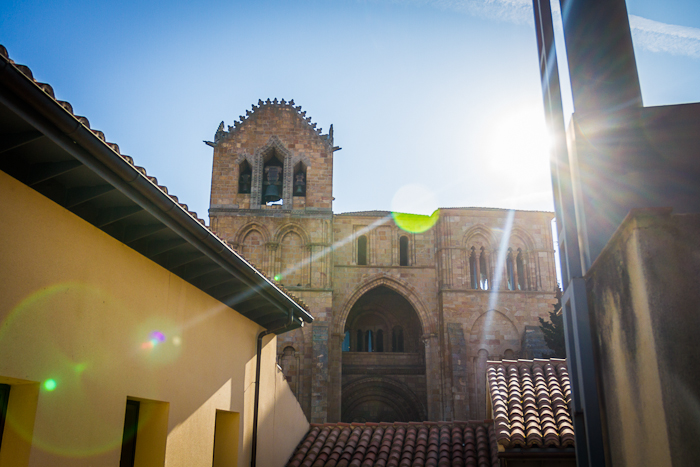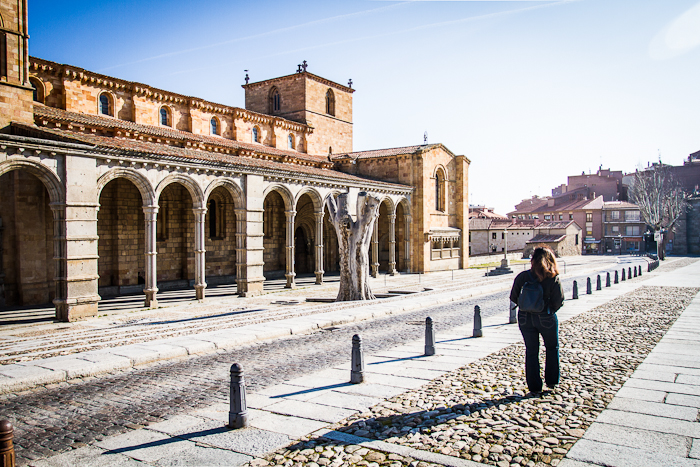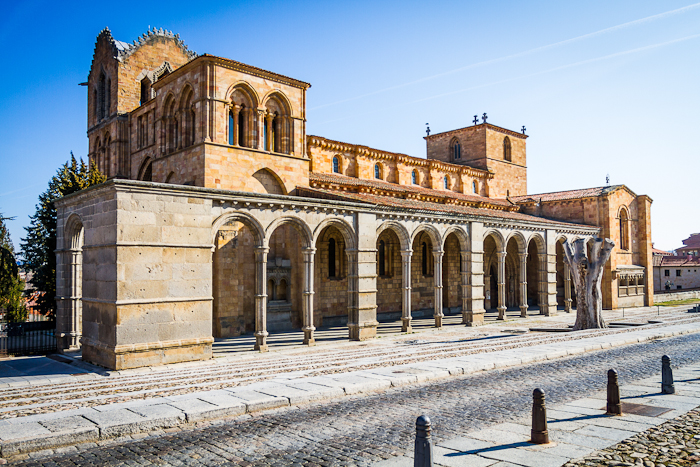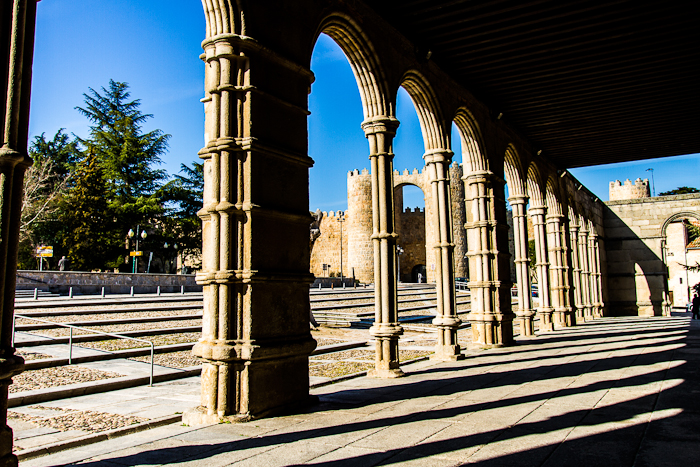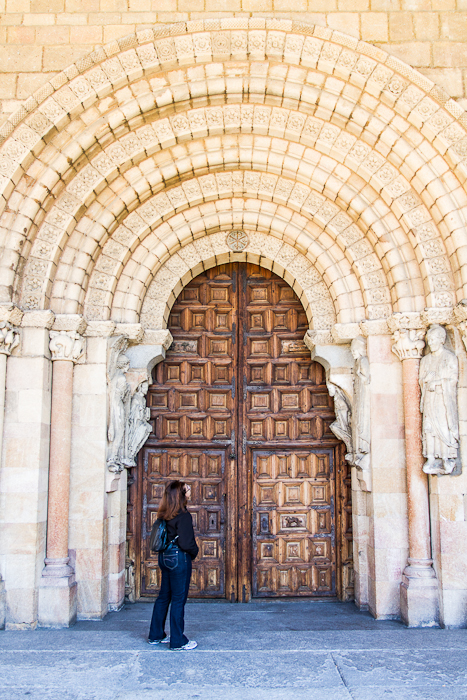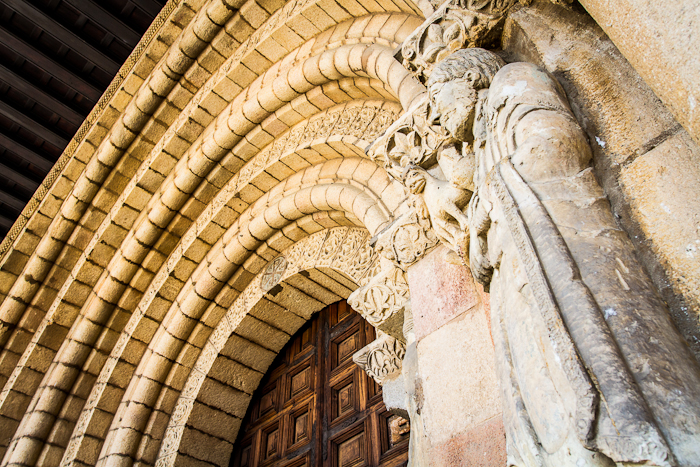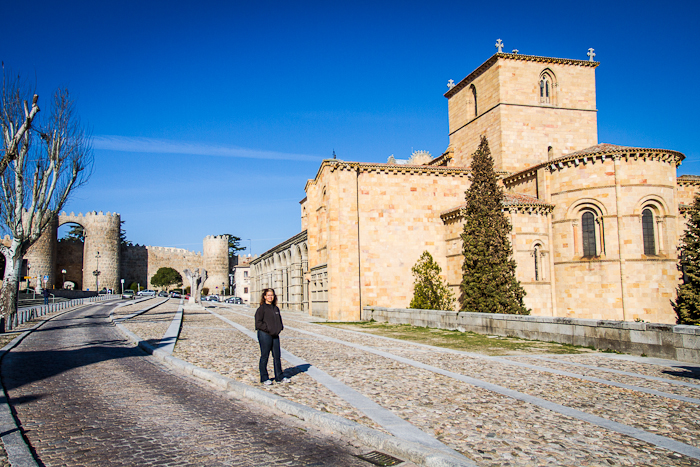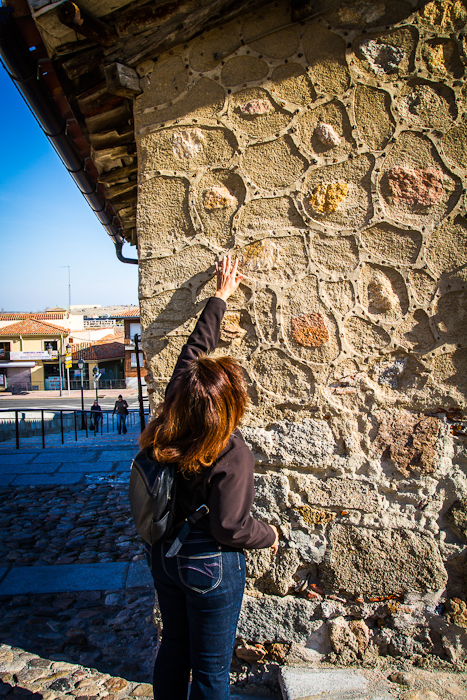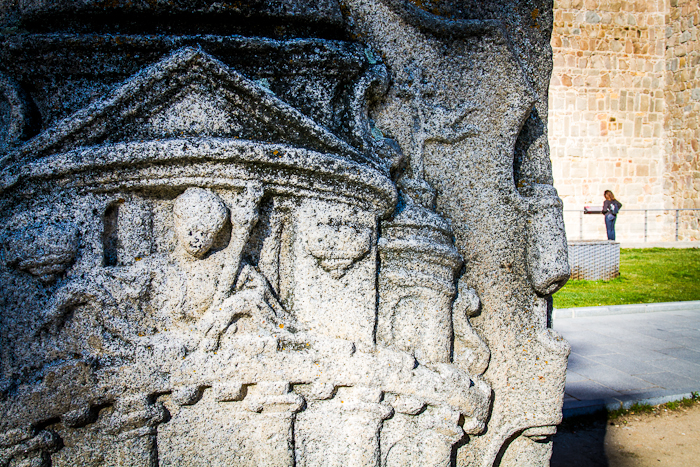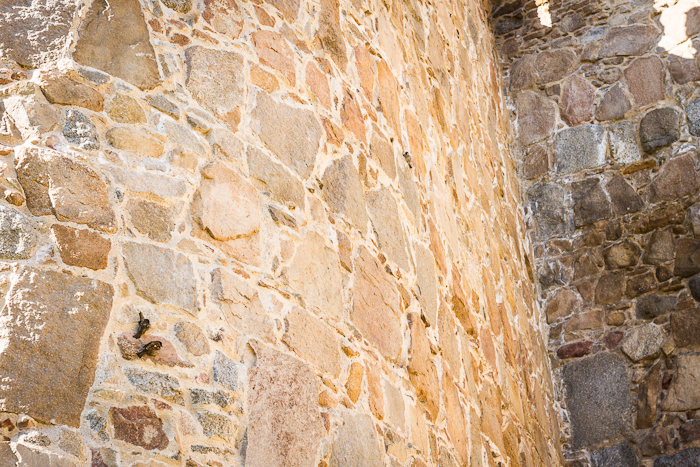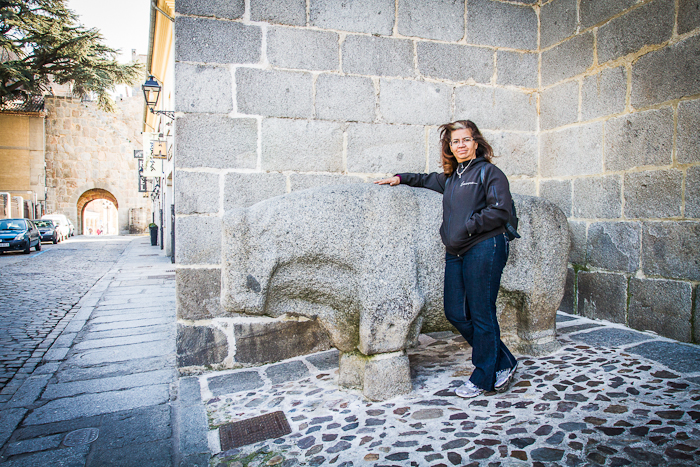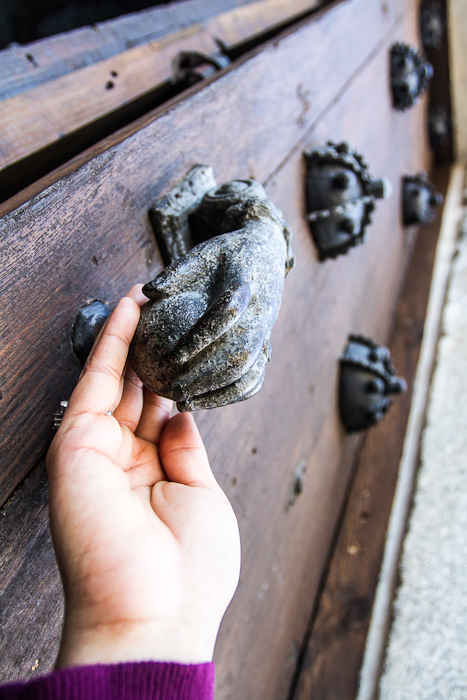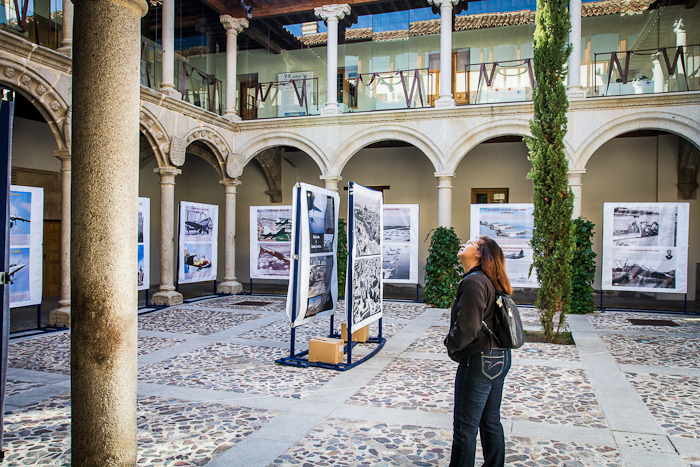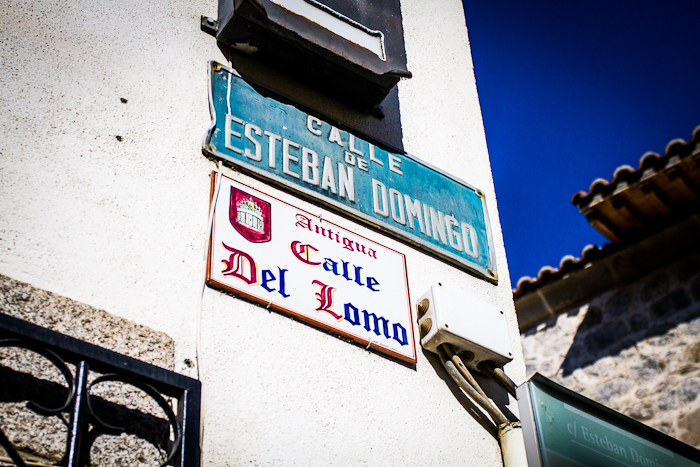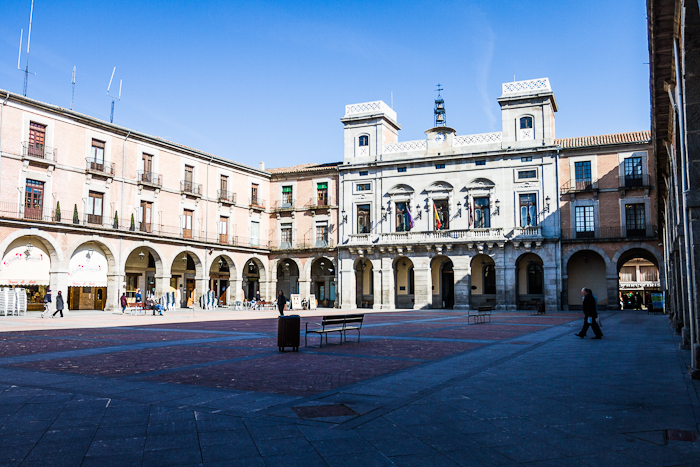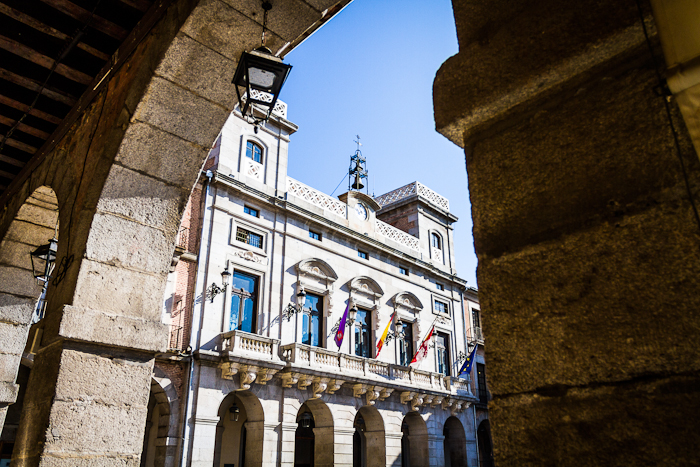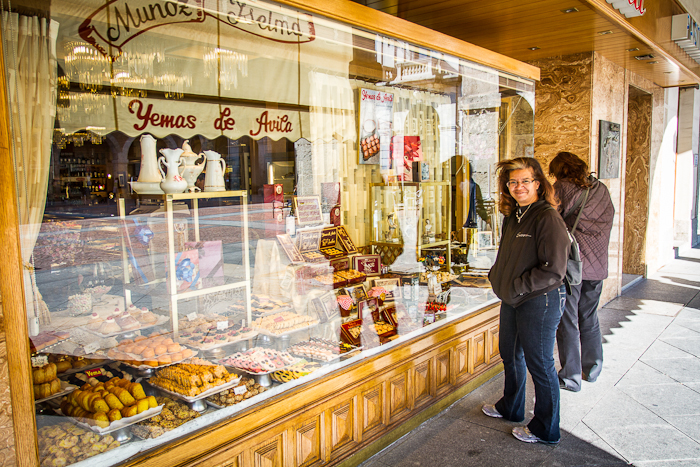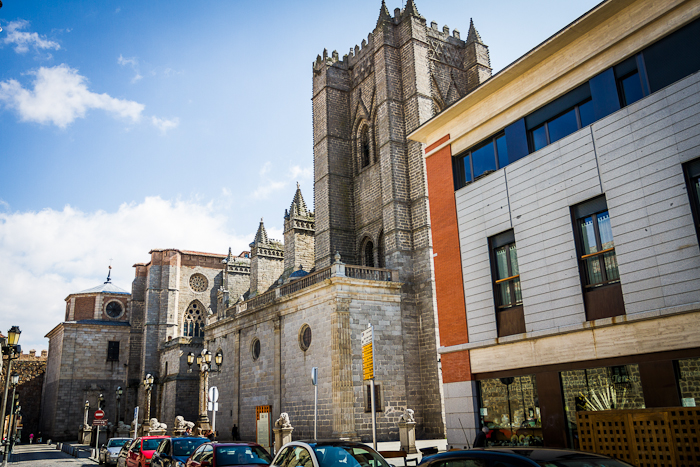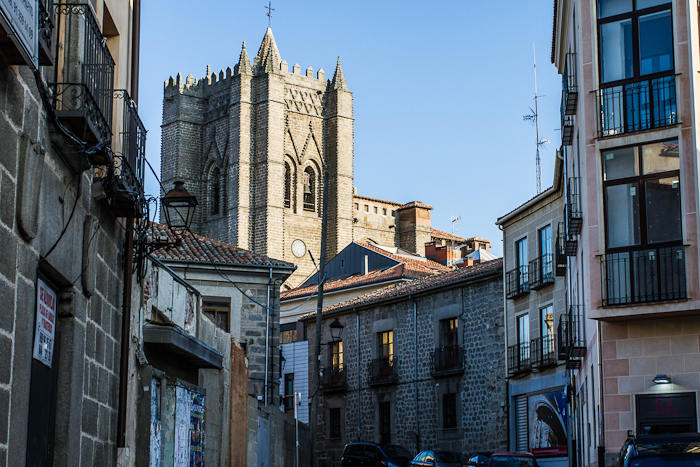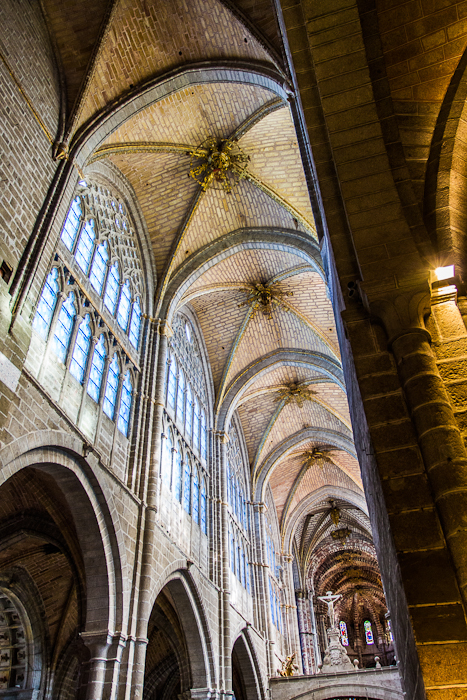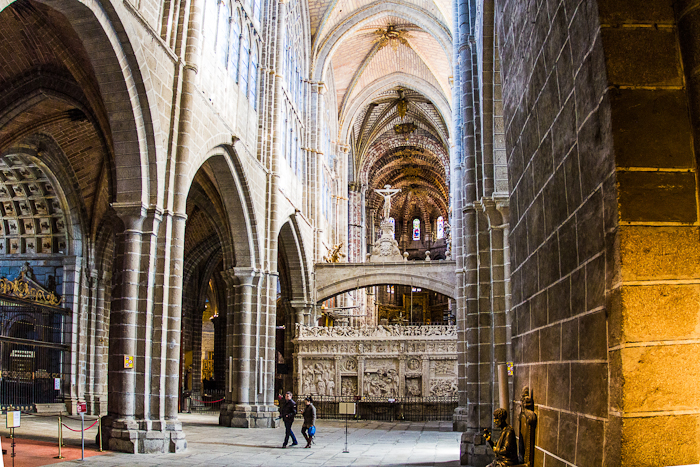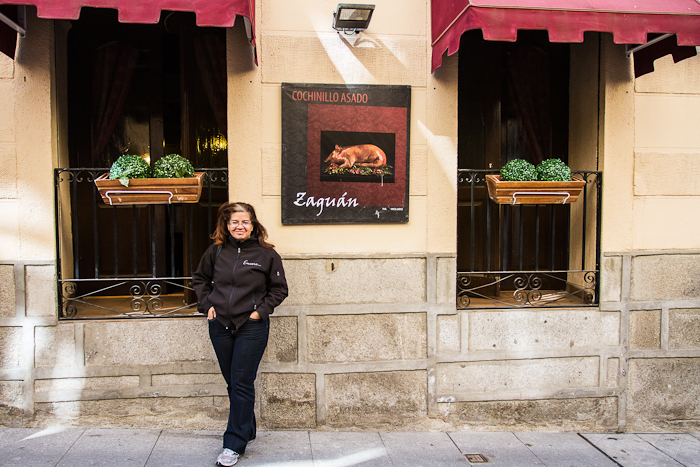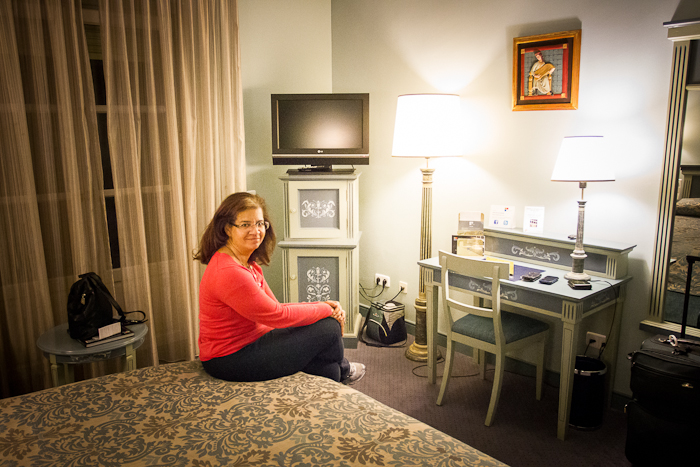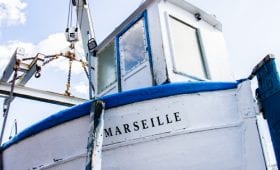Ávila, Spain is one of the most well preserved walled medieval cities in Spain. It was declared a UNESCO World Heritage site in 1985.
We arrived just after sunset into the beautiful walled city of Ávila. Against the dusky blue of the clear sky, las Murallas, or the walls, glowed a rusty orange, making it all seem more magical than it already was. Yes, yes, I realize the orange glow was probably from the lights that surround the walls-but it was still an amazing sight to behold.
We spent two nights at the Palacio de Los Velada, a beautiful 16th century palace that was transformed into a hotel. The rooms were spacious and elegantly appointed. Ours featured a Juliette balcony that overlooked an inner courtyard.
From the inner gallery, you can see the steeple of the Cathedral of Ávila which is located directly across the street. It is one of the very few full service hotels that I’ve encountered that includes free wi-fi throughout the property.
Upon arrival, the clerk at the front desk, recommended parking outside of the city walls, assuring us that it was both safe and free for overnight. Still a bit leery of the idea, we were up bright and early to ensure that we paid for the day and had no parking fines to mar our trip. Happily, there were no issues.
Although breakfast was high on our agenda, the city was just too interesting to resist…just a few photos and then we’ll eat…
The walls have a perimeter of 8254.59 feet and average 39 feet high.
Oh wait, that’s the Basilica de San Vicente, too bad it’s so early, there’s a really interesting tomb in there, just a few more shots…
The Basilica was started in the 11th century, but wasn’t finished until the 14th century so the architecture is a combination of Romanesque and Gothic styles.
Standing back from the church, the doors seems larger than life, but up close you can see that the arched top of the doors are actually stationary.
Amazing detail!
Hmmm, maybe if we walk a bit past San Vicente, we’ll find someplace to grab a quick bite.
Isn’t it fascinating that the mortar between the stones has been painstakingly decorated with tiny pebbles?
Can you spot the two little birds on the wall? Apparently they make their nests in the small holes where the mortar has worn away.
Finally hunger overrules our need to explore and we begin searching for a likely breakfast spot-Yelp to the rescue again!
Here’s something we missed on our stroll through the city the evening before. Avila has a truly ancient history, legend says the city was founded by Hercules! There is also evidence of Celtic history, demonstrated by the presence of the stone bulls, or verraco, which are found scattered through the province. The more well known figures are the Bulls of Guisando
I just love the detail on this door knocker.
This former palace now houses a museum. This exhibition is of World War II planes.
Aah, finally- Don Camilo’s! We were in search of a local experience, and the breakfast here was yummy! We ordered the eggs and bacon from the daily menu which included a little cafe con leche for me, and chocolate caliente for Cedric-everything was muy delicioso. Hot chocolate in Spain is a completely different experience than here in the States! Spaniards have been in love with chocolate ever since they brought it back from the Americas. Their version of chocolate caliente is thick and rich, like a ganache. Often it’s served with churros, which are long straight donuts, that are dipped in the chocolate, coating it like a frosting. In Barcelona, my son had to eat his with a spoon!
Plaza Mayor
After our very un-Spanish like breakfast, they typically eat pretty light, we continued exploring the city. We were drawn by the beautiful display of confections in this little pasteleria, Munoz Iselma, which opened in 1940, and is home to the famous Yemas de Avila, or Yolks of Avila. It’s believed that this tasty treat, made of egg yolks and sugar, was developed by the nuns of the local convent, and became popular during Saint Teresa’s lifetime. In those days, egg whites were used in the wine making process, to clarify the wine, so all the leftover egg yolks were given to the nuns. Voilá, a tasty treat is born! Everything in their showcase looked phenomenal, but after such a big breakfast, we decided to come back and sample later.
Wandering back towards our hotel, we stepped into the Catedral de Ávila, which was started in the 12th century and finished almost 300 years later. The Cathedral of Avila was right across the street from our hotel!
We had a lovely dinner at Zaguán located just off the Plaza Mayor; the service was so wonderful that we came back the next night as well! The best kept secret for dining out in Europe is the menu of the day, or menú del día. Often it’s posted on a chalkboard out front. The prices are generally better than ordering a la carte and often includes at least 2 courses, plus wine, beer or water.
Time to say good night Gracie, or maybe I should say, buenas noches Gracia!!
Check out Avila, Spain Part Dos!
Author: Desiree Carter
Images © Cedric Carter 2014

